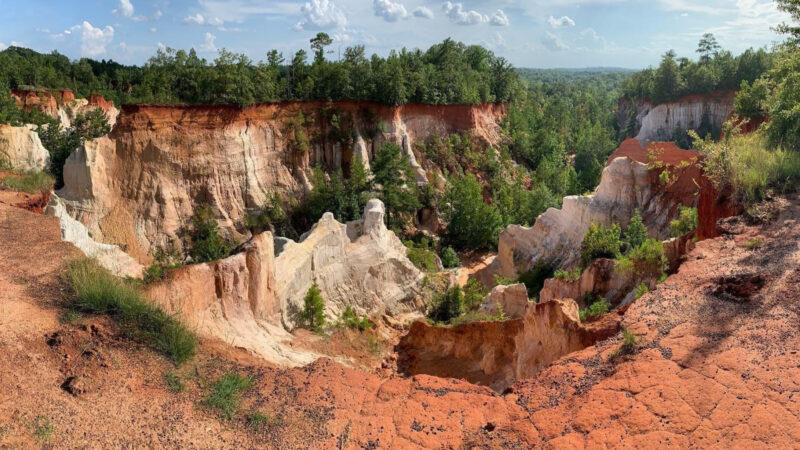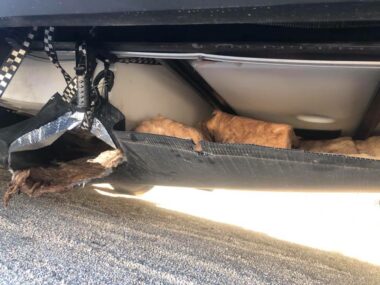Table of Contents Show
You may think Georgia is only a tiny mountainous region with coastal lowlands in the southeast. You wouldn’t be wrong.
However, did you know that Georgia is also home to canyons? One of the region’s best-kept secrets is the Little Grand Canyon in Georgia.
Let’s dive in to learn more about this wonder, how it came to be, and why you should plan a visit soon!
Where Is Georgia’s Little Grand Canyon?
Seven miles west of Lumpkin, you’ll find the Little Grand Canyon in Georgia.
It is easily accessible by Canyon Road/39C, which runs east-west from Highway 27 in Lumpkin, to Highway 39 near Florence Marina State Park.
Providence Canyon State Park welcomes visitors year-round to explore its 150-foot canyons.
It’s only about ten miles from the Chattahoochee River, which forms the border of Georgia and Alabama.
What Caused the Little Grand Canyon in Georgia?
Providence Canyon State Park is a picturesque southern park that illustrates the power of erosion and the effects of poor agricultural practices since the 1800s.
While weathering formed the Grand Canyon millions of years ago, the Little Grand Canyon in Georgia is more a result of bad farming.
Farmers from the 1800s discovered that cultivating crops on a slope let more water get into the soil.
But when these farmers moved between slopes, trying to grow crops year after year, they removed the topsoil.
Weathering carries loose topsoil away more quickly, which means crops stop producing.
Over-farming practices led to the erosion that created Providence Canyon in Georgia.
Two centuries of erosion resulted in deep gullies, causing additional water runoff and soil erosion.
A beautiful array of colors appear on the canyon walls, which is why Providence Canyon has the nickname “Little Grand Canyon.”
But this artificial and natural wonder is delicate, so when visiting, guests should not touch the canyon walls and must remain on hiking trails.
Keep in Mind: Wanting to get a few camping photos to post on Instagram? These are some of the most Instagrammable Places to Park Your RV

Why Is Georgia’s Little Grand Canyon in Georgia Important?
In 1970, President Jimmy Carter recognized the further damage that could happen at Providence Canyon and designated the area as a conservation site.
The canyon might have formed over 100 years, but it hasn’t stopped eroding, which is why it is protected.
Park Manager Mikayla Murphy explains in a 2021 interview, “We’re going to lose 3 to 4 feet every year, so it’s just going to keep expanding until we lose it all…Fences had to be moved, our brand-new visitors center had to be moved back and eventually we’ll have to move the road back and everything as well.”
About 300,000 people visit the Little Grand Canyon in Georgia annually.
With increasing foot traffic, there are fears that the erosion and weathering process could speed up.
When visitors go to Providence Canyon State Park, it’s essential to observe the rules to protect this ever-changing landform.
Things to Do at Providence Canyon State Park
When you visit the state park, seeing the canyon’s grandeur is undoubtedly top of everyone’s list.
But there are other outdoor recreational opportunities to fit every traveler, from camping and hiking to picnicking and learning.
You’ll need a $5 per vehicle daily park pass.
Camping
There are three pioneer campsites and six backcountry campsites at Providence Canyon State Park.
The backcountry campsites are about three miles into the park.
The pioneer campsites are much closer to the main access trail.
The pioneer campsite 03 has electricity, water, nearby restrooms, and is handicap accessible.
If you’re looking for an opportunity to bring your RV, Providence Canyon State Park doesn’t have amenities or spaces large enough to accommodate it.
However, Florence Marina State Park is a few miles away, where larger campsites and cabins are available.
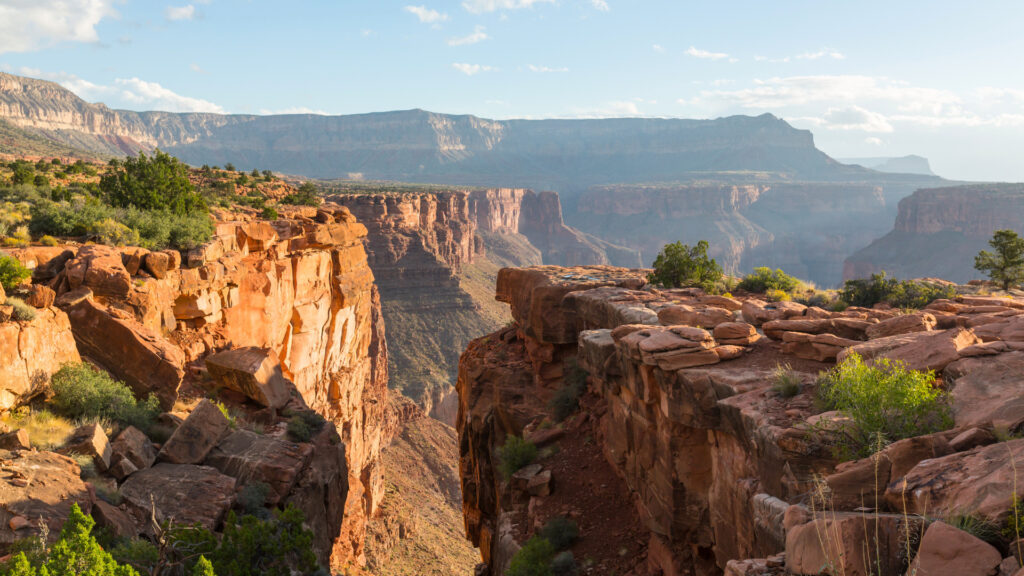
Hiking
The Little Grand Canyon in Georgia encompasses over 1,000 acres.
All trails begin and end at the Visitor Center.
If you’re hiking to canyons 1-5, turn left at the first creek bed on the white blaze trail.
If you’re heading out to canyons 6-9, turn left at the second creek bed.
The Canyon Trail Loop is a 2.5-mile moderate hike.
When you reach the rim of each canyon, you’ll turn back to return to the trail and head to the next canyon.
The Backcountry Trail is a 7-mile rugged loop. Instead of turning left to follow the Canyon Trail, you’ll turn right and follow the red blazes.
There are steep grades and challenging terrain throughout this trail. It also leads to the backcountry campsites.
While hiking, you might catch a sighting of the rare Plumleaf Azalea.
This flower grows only in this region, blooming during July and August.
For hikers who would like company, there’s a Canyon Climbers Club.
This hiking club is for outdoor enthusiasts who want to explore more areas, like scaling the top of Amicalola Falls or braving the swinging bridge in Tallulah Gorge.
Keep in Mind: If Angels Landing Hike isn’t on your bucket list, it needs to be. Before you go, here’s everything you need to know to be prepared for this hike.
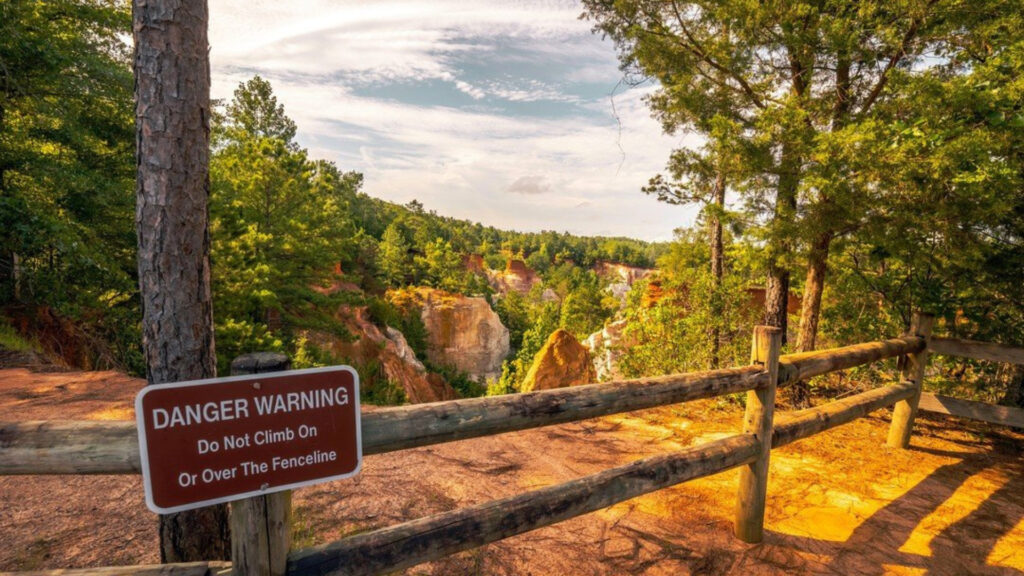
Picnicking
Providence Canyon State Park has two picnic shelters for guests to reserve.
The maximum number of people in each one is 50.
There is no electricity, but restrooms are nearby. Six picnic tables are under each open shelter.
For families looking to get together for a birthday party or reunion, these shelters provide ample space for a day-long gathering.
Museum
If you’re interested in learning more about the Little Grand Canyon in Georgia, stop in the Visitor Center before hiking or heading to the picnic shelter.
You’ll find exhibits, maps, and a renovated gift shop.
You’ll better understand environmental degradation and why the rules protect the land.
How Many Canyons Are in Georgia?
Although visitors don’t always know it for its canyons, Georgia is home to not only the Little Grand Canyon but also the Tallulah Gorge and the Cloudland Canyon.
These canyons are also popular destinations for both tourists and locals.
In the Blue Ridge mountain range of northeastern Georgia, you can visit the Tallulah Gorge and Tallulah Gorge State Park.
The gorge extends about two miles and is approximately 1,000 feet deep.
Cloudland Canyon is part of the Cumberland Plateau in the northwestern part of the state.
It drains the western slopes of Lookout Mountain and can reach up to 2,000 feet in some locations.
Hikers will enjoy the 2-mile loop in Cloudland Canyon State Park that explores the park’s various waterfalls.
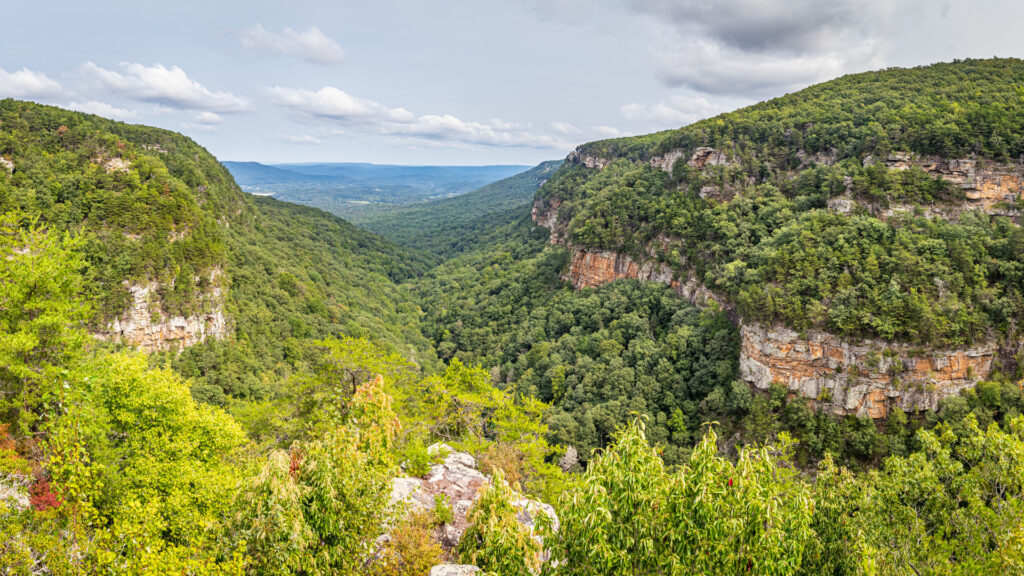
A Visit to Little Grand Canyon in Georgia Is Totally Worth It
A trip to Georgia should include a pit stop at the Little Grand Canyon. If you’re heading to Atlanta, the state park is slightly over two hours south of the city.
Coming from Montgomery, it’s about a two-hour drive. It’s worth a day trip to explore this stunning geologic wonder and witness the power humans can have on nature.
You’ll marvel at the colorful rocks, so put on your hiking boots and head out to Providence Canyon State Park. You won’t be disappointed!




